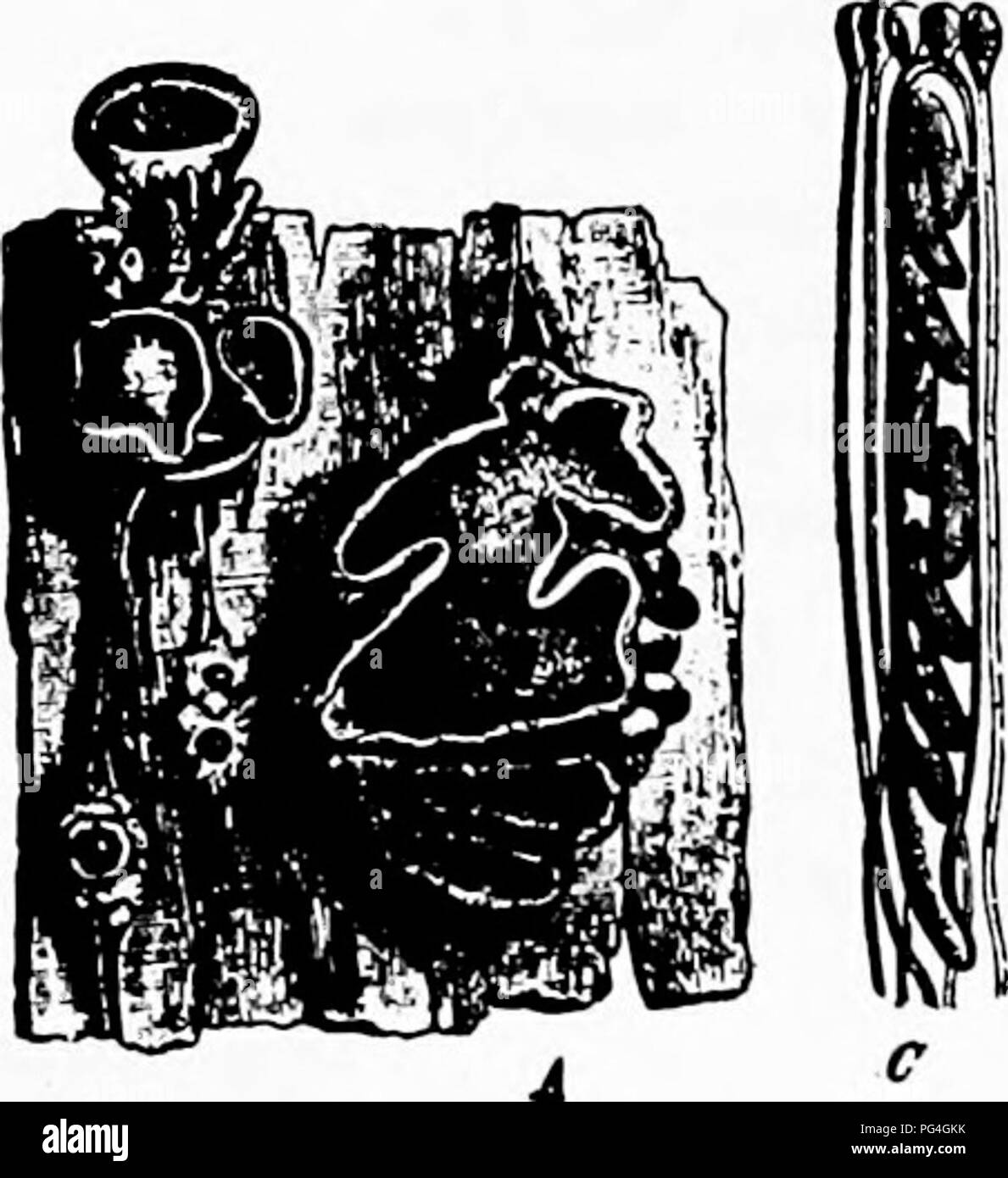. The fungi which cause plant disease . Plant diseases; Fungi. Fig. 107.—Cenangium, habit sketch, asci and paraphyses. After Tulasne. Conidia (= Brunchorstia destuens Erikss.) in pyc- nidia which are partially embedded in the host, the smaller simple, the larger compound, 1-2 mm. in diam.; spores 30-40 x 3 n, tapering-rounded at each end, 2 to 5-septate. A second conidial phase (=Dothichiza ferruginosa Sacc.) has simple spores. C. vitesia occurs in conidial form as Fuckelia on Ribes. In many Dermatea Fries (p. 151) A genus of over sixty species some of them parasitic species conidia in pycnidi

Image details
Contributor:
Central Historic Books / Alamy Stock PhotoImage ID:
PG4GKKFile size:
7.1 MB (272.7 KB Compressed download)Releases:
Model - no | Property - noDo I need a release?Dimensions:
1512 x 1652 px | 25.6 x 28 cm | 10.1 x 11 inches | 150dpiMore information:
This image is a public domain image, which means either that copyright has expired in the image or the copyright holder has waived their copyright. Alamy charges you a fee for access to the high resolution copy of the image.
This image could have imperfections as it’s either historical or reportage.
. The fungi which cause plant disease . Plant diseases; Fungi. Fig. 107.—Cenangium, habit sketch, asci and paraphyses. After Tulasne. Conidia (= Brunchorstia destuens Erikss.) in pyc- nidia which are partially embedded in the host, the smaller simple, the larger compound, 1-2 mm. in diam.; spores 30-40 x 3 n, tapering-rounded at each end, 2 to 5-septate. A second conidial phase (=Dothichiza ferruginosa Sacc.) has simple spores. C. vitesia occurs in conidial form as Fuckelia on Ribes. In many Dermatea Fries (p. 151) A genus of over sixty species some of them parasitic species conidia in pycnidia are known. Ascocarps scattered or clustered, stromate, sessile or not, black or brown; asci small, thick- walled, 8 or 4-spored; spores el- lipsoid or spindleform, 1-celled, becoming 4 to 6-celled, brown, 2-ranked; paraphyses septate, api- cally enlarged and colored. D. carpinea (Pers.) Rehm. is a wound parasite on the horn- beam and beech; D. cinnamomea (Pers.) Rehm. on oaks; D. acerina Karst, on maple (Acer pseudo- platanus); all in Europe. D. pninastri (Pers.) Fr., with its conidial form Sphaeronema spurium Fr. is found on Bark of various species of Prunus, in Europe and America. Bulgaria Fries (p. 151) The gelatinous apothecium is rather large and dark colored; asci 4 to 8-spored; spores 1-celled, elongate, brown. There is one species worthy of mention.. Fig. 108.—Dermatea. A, habit sketch; C, ascus and paraphyses. After Tulasne and Rehm.. Please note that these images are extracted from scanned page images that may have been digitally enhanced for readability - coloration and appearance of these illustrations may not perfectly resemble the original work.. Stevens, Frank Lincoln, 1871-1934. New York : Macmillan